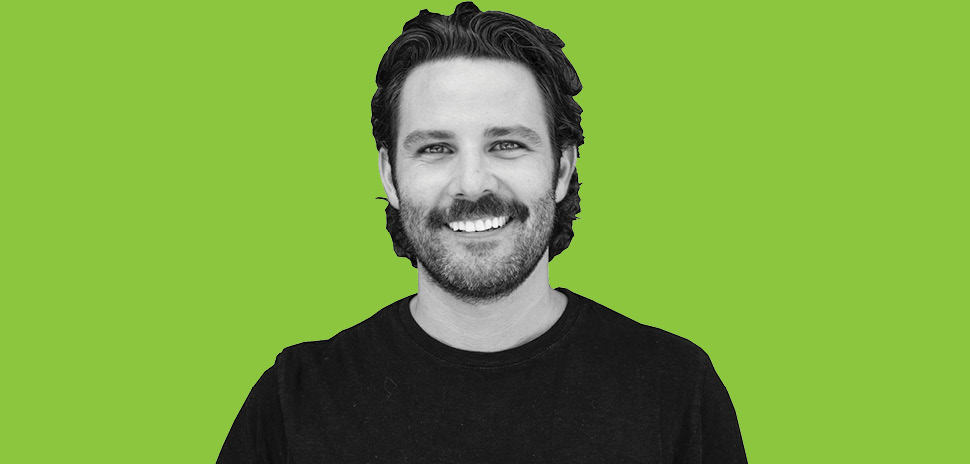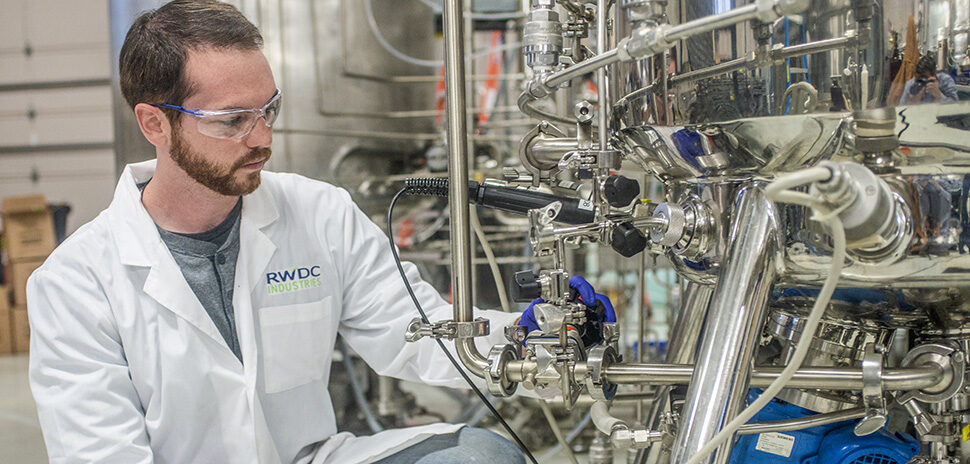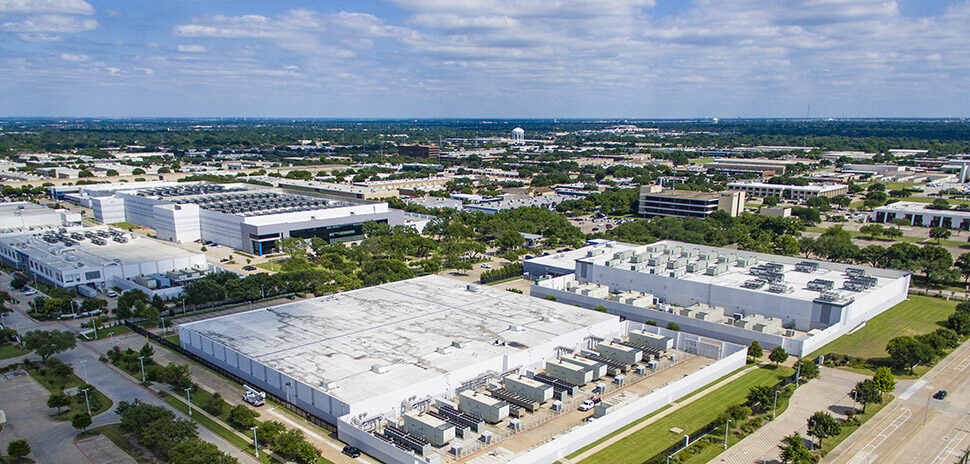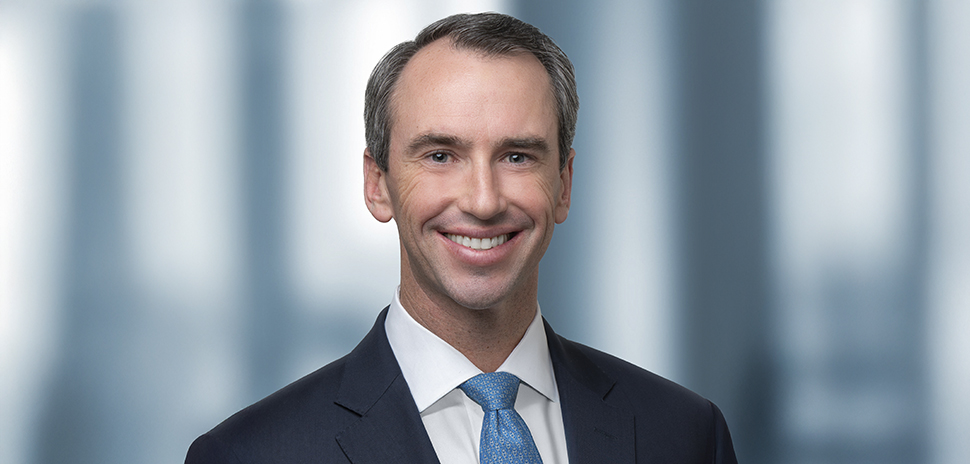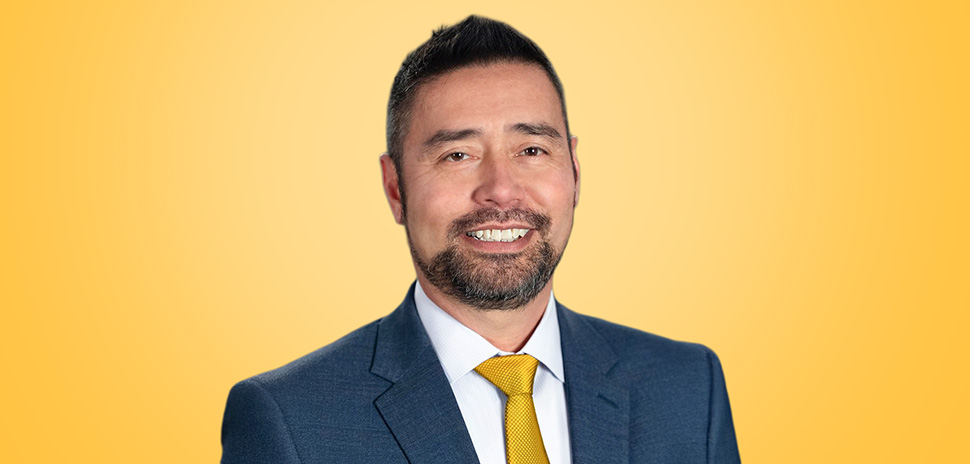Common Desk started with the idea of making the office a magical place, says founder and CEO Nick Clark. “Why can’t it be something special? Why can’t it be fun?”‘
What gets Clark’s “gears grinding is the intersection of real estate and community,” he says.
Clark’s first location opened in Deep Ellum in 2012, and he says there was magic in seeing people coming together in serendipitous interactions. The company that took the very first private office was Uber, which launched its Texas operations out of Common Desk.
Now in 23 locations in Texas and North Carolina, the fast-growing coworking company continues to thrive despite the challenges of the pandemic. Case in point: Earlier this year the company was acquired by WeWork Inc. and will operate as “Common Desk, a WeWork Company.”
A partner for scaling
2020 was rough, says Clark, “Our business is over 50% month to month, and as soon as March 2020 rolled around, just about 50% of our business went right out the door.”
But, says Clark, the company was growing at a rapid clip by the end of 2021, opening close to one location a month.
“We were looking for a partner to help scale the business after the expansion to North Carolina,” says the founder, who sensed an opportunity to shape the growth of the flexible workspace industry.
“It became obvious that we should look for an operating partner rather than just a financial partner,” he says. “And I wanted the brand to survive.”
WeWork was that pairing. Under the WeWork umbrella, Common Desk is expected to go deep in high-growth Southern markets.
Competing with the home office
Clark, who remains CEO at Common Desk, is still out to make magic.
He believes that the office sector is going through a cataclysmic change, hastened by the pandemic, similar to what retail has experienced in the last decade with the increase in online sales. While offices still engage in what he calls “an amenity race,” they’re now more in competition with home offices rather than one another. Offices are moving away from mahogany walls and cathedral-like common areas to spaces designed for perks, accommodation, and connections that workers can’t find at home or in virtual meetings.
In this case, change is a good thing, according to Clark, who says he’s actually in the business of “daymaking.”
“I think that office absolutely needs to change: It should be more accommodating and more hospitable,” he told Dallas Innovates. “We spend too much time at work for it not to be.”
Clark is among the experts invited to share their thoughts on the CRE market for our recent DALLAS® magazine that focused on how DFW punches above its weight in commercial real estate. Here’s what he had to say in “View from the Top Tier.”
What are your biggest challenges and opportunities in North Texas?
It’s meeting employees’ needs for where they are and where they live. Thankfully, we started pushing into the suburbs in 2017, when we opened our first suburban location at Granite Park in Plano. We opened that location with Granite Properties with zero data on how coworking would perform in the suburbs, and it was incredible seeing the space open and fill up in about 45 days. That showed us how thirsty suburban Dallas was for coworking flex spaces of that type.
A challenge in the next couple of years is finding additional beachheads that make sense and determining how much further outside the city center will work. For example, we opened a McKinney location last year, and it’s performing really well. In 2018, I would have thought McKinney was too far out.
I think we’ll continue to see a heavier push into the suburbs as more people have gotten used to the convenience of working from home in the last two years. You’re going to see more and more people searching for office space that’s closer to home—basically just saying, “Hey, look, we’re tired of a 20- to 30-minute commute.” I wouldn’t be surprised to see more companies choosing to go with a hub-and-spoke model, even within Dallas-Fort Worth, meaning they have one larger corporate office that might be closer to the city center and CBD district.
Why would people gravitate to coworking spaces instead of being at home all the time?
I have—like a lot of people—a nice home-office setup. So the need for getting into the office is much more geared towards collaborations, meeting time, and getting face-to-face time with people. After going through the Great Resignation of last year, it’s becoming more important for companies to have a very strong culture. I think a lot of companies are still struggling with that. It’s almost impossible to develop a very strong culture from Zoom.
We have to go into the office to make connections, build culture, and build relationships with employees, staff, and customers. The struggle is going to be for office environments to continue getting better because we’re truly competing with the home office. That’s something we’ve felt in the coworking world. A couple of years ago, that really wasn’t the case.
Now the home office is part of the competitive analysis, meaning that we’re changing how we develop space within our shared space. At Common Desk, we’re putting monitors at just about every seat because most people work with monitors at home. When they come to work, they expect a monitor. If they know they’re not going to have a monitor, well, why come to work? There are a number of things like that.
Over the last couple of years, people have been talking about the office going back towards a deep densification effort. I don’t really think so. We’ve densified the office a bit over the last few years. Beyond any COVID concerns or pandemic concerns, I think that densification makes sense, but the offerings around the office and the way that we’re building out the office are going to have to continue to evolve. They need to get better so that we can bring people out of their homes and get them into the office.
Let’s talk about the quality of interaction when you’re totally virtual. Why does that matter?
When you lose the serendipitous interactions with people, that can become toxic in company culture. Zoom is very transactional by nature. If everybody is stuck at home and you’re going with a work-from-home-first type of work culture, that can become very transactional. I think that’s when company culture starts to fall apart. I know I’m biased, but I do believe the office plays a huge role in building culture.
What do you envision for the future of offices?
You’re going to see the office become more experiential. We’re more geared towards hospitality. Over the last 10 to 15 years, office buildings have been in an amenity race where everybody’s obsessed with getting all the “check-the-box” amenities into their office building. Nobody thinks about how you truly activate that. I think the next bounce of the ball is going to be the activations around the office building, which can give them a kind of immersive experience that brings people out of their homes and into the buildings.
Employees will think, “Hey, what does the office building have that I don’t?” An example of that would be, instead of a decked-out self-service espresso machine in the break room, you’ve got a barista in the lobby of the building that’s actually serving you an incredible latte. That’s something that can become a part of their ritual of going into the office—and the reason that they go into the office as opposed to staying home and enjoying their Keurig.
I think you’re going to see more and more of that, like instead of simply having a gym, you’ve got a gym that is being activated by yoga instructors, and there’s a class schedule associated with the gym so that people can get together and enjoy group workouts. These are all the things, coming out of the pandemic, people are going to be so thirsty for. I think office was already on a trend of moving in that direction pre-pandemic. The pandemic has done nothing but move us into the future of office a bit quicker.
What about office design and trends?
It’s a good era for the design of office. Ten years ago, everybody was obsessed with the open office. Then people started pulling back, saying “Wait a minute, this doesn’t feel like it’s working.”
I think it’s because we got a little too obsessed with the open office. Having that openness is incredible. It breeds connection, but people also need privacy. At Common Desk, we’ve settled in on a great mix of having private offices, whether they’re dedicated offices or just simply touchdown offices for people to have important calls or meetings while having the option of being in a public open area.
Optionality within the office is really important because, again, that’s something that you don’t have at home.
Let’s talk about flexibility.
We’ve seen a trend of the deal terms being shortened, but I think that’ll level off a bit. Flex office is a big buzzword, but a lot of people misunderstand flexibility. Everybody hears short-term office space and freaks out, especially in capital markets. What companies are asking for is flexibility in terms of the number of people they’re able to service within the office. A lot of companies are comfortable with a five-to-10-year term as long as you can continue serving their needs.
Office is trending in favor of flexibility, which is Common Desk’s sector of office. I think the office sector is about to experience a similar, almost kind of apocalyptic, scenario that retail just went through.
Over the last 15 years, we’ve watched retail change with online sales. I believe we’re about to see something very similar with office, where Class B office is going to all but go away.
“All of a sudden, instead of designing for intimidation, we’re designing for accommodation.”
Class A office will no longer be these mahogany walls, these cathedral common areas, that you see in a lot of the trophy Class A buildings of today. They’re going to be replaced by hospitable and experiential offerings, along with usable functional spaces that are still very Class A by nature.
Again, what are we competing with? We’re competing with people’s homes and the comfort factor of the homes. All of a sudden, instead of designing for intimidation, we’re designing for accommodation. I think that office absolutely needs to change: It should be more accommodating and more hospitable. We spend too much time at work for it not to be.

Nick Clark, center, with Bill Sproull and Hubert Zajicek at State of Entrepreneurship 2022.
What advice do you have for entrepreneurs who are getting started in real estate?
There are a lot of ups and downs of entrepreneurship. You need to be passionate about the business. It’s very important for those times when you’ll be trying to figure out how you’re going to make payroll in two weeks—or whatever problem might be in front of you. You’ll need to be very passionate about what you’re doing continually as entrepreneurs.
This interview has been edited for brevity and clarity.
A version of this story first appeared in the print edition of DALLAS® Commercial Real Estate 2022, published by Dallas Next for TREC and the Dallas Regional Chamber. Read more in the digital edition of the magazine below, and request the next print edition here.
Get on the List
Request the next print edition of DALLAS® Commercial Real Estate here—and sign up for the Dallas Innovates e-newsletter for what’s new and next in North Texas business and CRE. To share your news or get information about the magazine, reach us here.
The real estate magazine is part of the DALLAS® media platform that includes the DALLAS® Relocation and Newcomer Guide and the DALLAS® Economic Development Guide. Published by Dallas Next for the Dallas Regional Chamber, together they tell the world about the future of live, work, learn, and play in North Texas.
![]()
Get on the list.
Dallas Innovates, every day.
Sign up to keep your eye on what’s new and next in Dallas-Fort Worth, every day.

